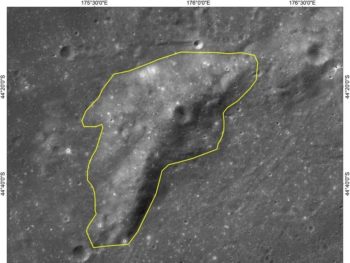China’s farside lander and lunar rover, Yutu-2, have ended their work for the 13th lunar day on Thursday (Beijing time). The lunar twosome switched to dormant mode for the lunar night, according to the Lunar Exploration and Space Program Center of the China National Space Administration (CNSA).
The country’s Chang’e-4 probe was launched on December 8, 2018, making the first-ever soft landing on the Von Kármán crater in the South Pole-Aitken Basin on the farside of the Moon on January 3, 2019.
Friday marks the one-year anniversary of the lunar landing of the Chang’e-4 probe.
Longest-working lunar rover
China’s Xinhua news agency notes that the rover has driven 1,173 feet (357.695 meters) on the farside of the Moon to conduct scientific exploration of the territory. Yutu-2, or Jade Rabbit-2, has worked much longer than its three-month design life, becoming the longest-working lunar rover.
“The scientific instruments on the lander and rover worked as planned. The rover conducted explorations of several sites and photographed and conducted an infrared detection of a stone on the lunar surface, said the center,” explains the Xinhua story.

Image of Mons Tai, a hill near “Statio Tianhe”, the landing site of China’s Chang’e-4 lunar probe.
Credit: CNSA
The landing site of the probe has been named “Statio Tianhe.” “Tianhe” is the Chinese word for the Milky Way and “Statio” is Latin for base.
Using data obtained by the visible and near-infrared spectrometer installed on Yutu-2, Chinese scientists found that the lunar soil in the landing area of the Chang’e-4 probe contains olivine and pyroxene which came from the lunar mantle deep inside the Moon.
Slow but steady
“Due to the complicated geological environment and the rugged and heavily cratered terrain on the farside of the Moon, the rover drives slowly but steadily and is expected to continue traveling on the Moon and make more scientific discoveries,” Xinhua notes.
In order to provide a communication link between the farside of the Moon and the ground control, China sent the relay satellite Queqiao, or Magpie Bridge, into the halo orbit around the second Lagrangian point of the earth-moon system, nearly 500,000 kilometers from the Earth.
Relay satellite cooperation
Zhang Lihua, chief designer of the Queqiao, said the satellite has been working well and is able to continue its operation for another 10 years.
“We will let the Queqiao work as long as possible. It could also provide communication for probes from other countries if they intend to explore the Moon’s farside within the lifetime of the satellite,” Ye Peijian, an academician of the Chinese Academy of Sciences and a senior space expert, said earlier.
Scientific tasks
The scientific tasks of the Chang’e-4 mission include conducting low-frequency radio astronomical observations, surveying the terrain and landforms, detecting the mineral composition and shallow lunar surface structure and measuring neutron radiation and neutral atoms.
The Chang’e-4 mission also involves four payloads developed by the Netherlands, Germany, Sweden and Saudi Arabia.
China’s next step in its lunar exploration program is the Chang’e-5 lunar probe, weighing roughly 8.2 tons. That mission is expected to be launched in 2020 and is designed to haul back to Earth lunar samples weighing 4.4 pounds (2 kilograms).







